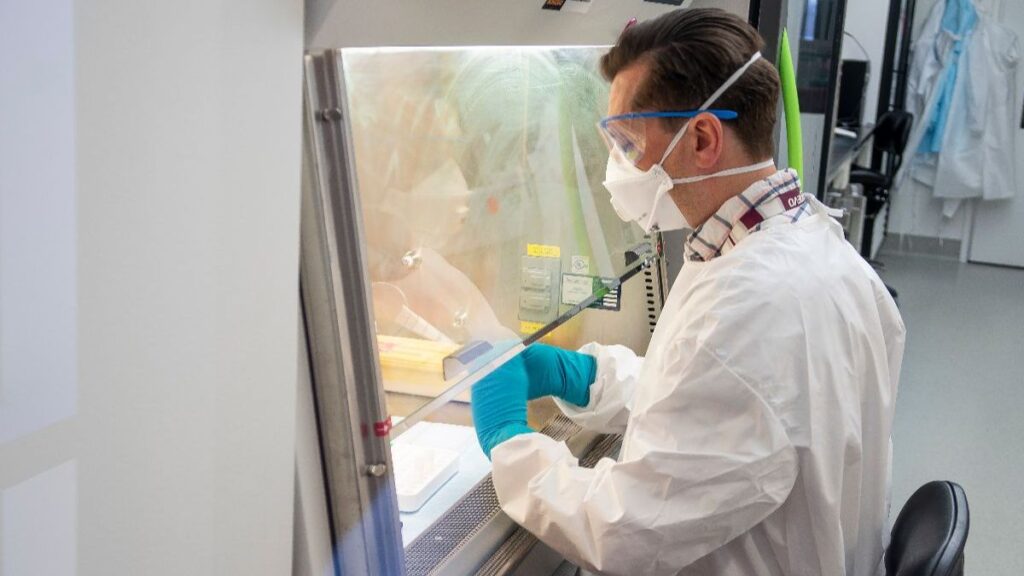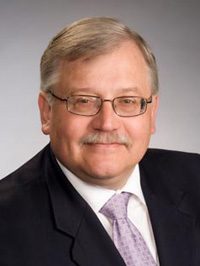No season this 2020 has been untouched by the COVID-19 pandemic. As we’ve come to find ways to enjoy the turning of the seasons despite, many residents are dreading winter as SARS-CoV-2 cases spike across the United States. Be it holidays without in-person family and friend gatherings or learning new ways to cope with the coming cold weather, everyone has some personal difficulty they are experiencing. Clinical labs have been bracing for the difficult realities from another major wave of diagnostic testing for COVID-19 that, as experts indicate, has not yet peaked as influenza season also approaches.
Laboratory professionals are doing their best to prepare their response, as the Center for Disease Control (CDC) and public health laboratories likewise roll out their responses to aid and serve clinical laboratories as a resource. To learn more about what the Wisconsin State Laboratory of Hygiene (WSLH) is doing as a national public health lab to support clinical labs during influenza this year, I sat down virtually with Erik Reisdorf, Surveillance & Virology Team Lead for the Communicable Disease Division.
WSLH, which is home to WSLH Proficiency Testing, is doing a lot, I learned, to provide outreach and support to clinical laboratories not only within the state of Wisconsin but across the United States.

Everyday behind the doors of WSLH, the Communicable Disease Division (CDD) processes hundreds of tests, not only for SARS-CoV-2 but also for other upper respiratory pathogens. WSLH processes tests to monitor activity of SARS-CoV-2, influenza and other pathogens that may be present in the 5 public health districts of Wisconsin. As WSLH’s Surveillance & Virology team Lead since 1993, Erik Reisdorf and the rest of the CDD team have played a big role in developing WSLH as one of the country’s three National Influenza Reference Centers (NIRCs), which serves to support and strengthen national surveillance activities in collaboration with the Influenza Division of the CDC.
Every week, Reisdorf’s team collaborates with clinical laboratories to receive their testing data and samples, spanning the state of Wisconsin’s 5 public health districts, including rural areas. WSLH further characterizes these surveillance samples by subtyping and full genomic sequencing in addition to culturing the virus and sending the virus isolates to CDC for further analysis. WSLH uses this data from clinical labs to provide situational awareness and monitor the genetic drift of pathogens over time. Beyond WSLH’s role of providing surveillance reports, WSLH also sends data to CDC which is critical to inform vaccine strain selection.
“Everyone plays a big role, all labs,” says Reisdorf. “Our role here at WSLH is to coordinate this surveillance work. The samples that we ask clinical labs to send us helps inform vaccine strain selection and monitor for influenza antiviral resistance.”
Reisdorf also takes time to share with us how WSLH is strategizing their testing plan and how clinical labs might negotiate their own facility and region-specific hurdles to managing diagnostic testing as other respiratory pathogens are on the rise with the coming colder winter months.
Q. With more SARS-CoV-2 cases on the rise in Wisconsin and in the United States overall, how does WSLH’s response to influenza testing look differently this year?
A. We are dealing with a surge as SARS-CoV-2 samples in support of the pandemic response efforts. Every lab is feeling the crush this year as well. Even as the number of SARS-CoV-2 tests far exceed what we have ever done in the past for influenza, we do have to maintain resources for influenza testing, which is a priority at national level too.
We have a new test, Influenza SARS-CoV-2 Multiplex PCR, which the CDC developed so that public health labs could manage their resources better and maintain this critical public health program. This allows us to not run two separate tests for SARS COV-2 and Influenza. Clinical labs are likely looking at similar multiplex PCR tests as well; and, companies are just starting to roll out those now.
Q. What advice would you give to clinics and hospital laboratories on navigating the kinds of tests available for testing SARS-CoV-2 and influenza?
A. What sort of test kits and what sort of volumes that clinical labs can get to stay on top of timely testing are everyone’s main pressure points this year. We are hearing of shortages of test kits and labs being on allocation. Regarding allocation, labs may want 1,000 tests a week, but can only receive 100 tests a week, for example. There have been a lot of issues with other testing supplies such as pipette tips too. It has been difficult for us with managing the surge of samples to 1,000 samples per day while also managing reagents and consumables.
How we have best been able to deal with these challenges at WSLH was to diversify our tests and instruments. We now have three PCR tests for SARS-CoV-2 and that has really helped us manage our resources to ensure that we can continue to provide testing. If we run out of reagents on one test we can use reagents for another test to stay on top of navigating resource challenges.
Q. Any advice or words of encouragement for clinical labs regarding staying on top of patient testing and their own work-related fatigues?
A. Everyone is dealing with stressed staff, shortages of Personal Protective Equipment (PPE) and test reagents and still are doing a great job to maintain as best they can. The testing that clinical labs has done is absolutely critical for public health contact tracing efforts to help limit community spread. Timely testing is also very important, in this regard. Every clinical lab is doing the best they can do with the resources they have and their efforts are greatly appreciated by public health. They couldn’t do their jobs effectively without the timely testing performed by clinical labs.
Also, for updated information on virus activity I would also encourage clinical labs in other regions of the country to look to their states public health lab or department of public health for surveillance reports on pathogens in their state. Every state has their own surveillance program in place. If they are interested in garnering situational awareness for influenza or non-influenza respiratory pathogens, they can connect with the right people to give them that information for their community.
Given the myriad of upper respiratory infections present during the fall/winter, a big question for many labs is how to ensure they have the right test at the right time in order to have the clearest picture for patient testing success. Clinical labs can look to surveillance programs in their state and nation-wide to help keep the knowledge gap as narrow as possible in diagnostic testing for SARS-CoV-2 and influenza amongst other emergent respiratory pathogens.
Beyond the role of providing situational awareness, public health labs in your state or region can also be a great resource for thinking through testing strategies to help with timely, accurate testing. WSLH Proficiency Testing, and WSLH overall, is a resource to clinical laboratories, state-wide and beyond. We hope that you have found this article informative and want to also take this moment to thank all of our laboratory professionals for the work that they do to everyday to help treat and heal their communities.


